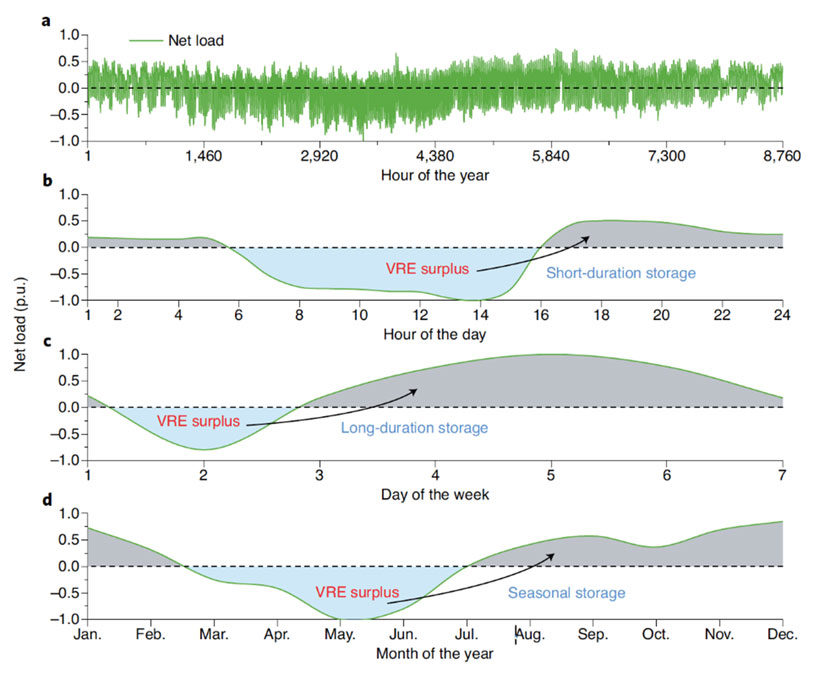Researchers Take a Practical Look Beyond Short-Term Energy Storage
With variable renewable energy (VRE) expected to become a much larger share of the global energy mix, storage solutions are needed beyond short-duration timescales, such as standard commercial batteries, which are suitable for covering hourly differences in net load.
A Nature Energy “News & Views” article by National Renewable Energy Laboratory (NREL) research engineer Omar J. Guerra describes research needs for longer-duration and seasonal energy storage solutions. The article, titled “Beyond short-duration energy storage,” reviews important practical implications of a research article contributed by Nestor A. Sepulveda and colleagues, as well as research opportunities to develop a stronger understanding of how long-term and seasonal storage technologies can become cost-effective and grid-supportive energy solutions.
Guerra’s article draws attention to the need for new system-level models that resolve the integrated aspects of longer-duration storage options, including seasonal timescales.
Multi-Scale Energy Storage Needs for a Hypothetical 95% Carbon-Free Power System

Longer-duration energy storage technologies could include mechanical, such as pumped hydro; electrochemical, such as novel battery technologies; chemical, such as hydrogen; or thermal, such as molten salts. Guerra’s article describes recent studies showing how these technologies can provide grid-scale storage in the long term; however, more detailed analysis is needed to motivate industry investment and determine the complete value of upcoming technologies to the grid.
This review summarizes the research needs to arrive at more comprehensive results: better temporal representation for production cost models and capacity planning models; more integrated models showing how storage technologies behave with varying loads and levels of renewables; and better-informed experimental validation of storage technologies.
Overall, this article suggests that with higher detail and more representative modeling, the energy industry will have a more complete understanding of how long-duration storage technologies could displace carbon-intensive energy sources, provide resilience and transmission deferral benefits, and become economically viable investments.
Read the full “News & Views” review article.
Last Updated May 28, 2025
